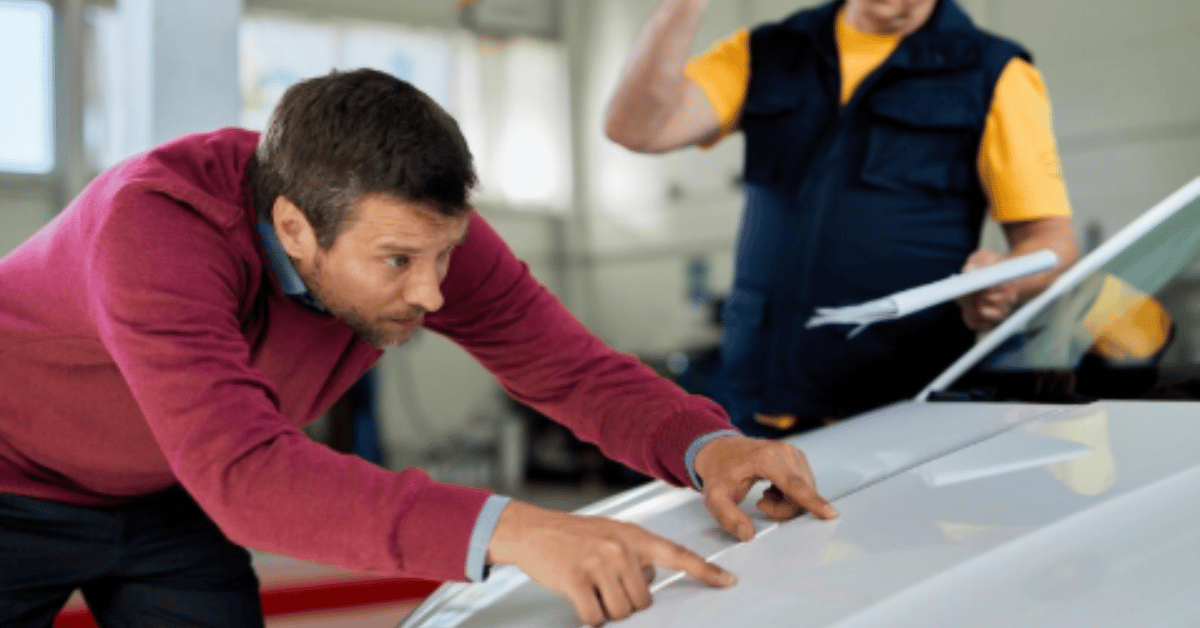Precut tint has emerged as one of the most practical solutions for vehicle owners seeking a professional look without the complexity of traditional tinting. Instead of cutting film by hand during installation, precut tint arrives ready‑shaped to match the exact dimensions of your vehicle’s windows. This innovation minimizes waste, saves time, and greatly reduces the risk of installation errors. Whether you are a first‑time user or a car customization enthusiast, understanding the advantages, process, and considerations behind precut tint is essential before making a purchase. In the next sections, we will explore how precut tint works, its material differences, installation techniques, and maintenance strategies. By the end of this guide, you will have the clarity to decide whether precut tint is right for your needs and budget. This article will also address misconceptions, compare precut and bulk film, and give you insider tips from industry professionals to maximize your investment.
Understanding Precut Tint
Precut tint refers to window tint film that has been cut to match the exact size and shape of your vehicle’s windows using computer‑controlled cutting systems. Manufacturers maintain an extensive database of window dimensions for thousands of vehicle makes and models. When you place an order, the system selects the template for your specific year, make, and model, then cuts the tint film accordingly. This means you receive panels that fit directly onto each window without requiring manual trimming. The benefit is precision and ease of application, even for DIY users. This precision ensures a cleaner finish, reduces creases, and minimizes the risk of scratching the glass during installation. Since the film is pre‑shaped, there is no need for large cutting tables or extra tools, making it a more approachable project for those without prior tinting experience.
Why Precut Tint is Popular Among Car Owners
The rise of precut tint is tied to convenience and improved results. Many car owners once avoided DIY tinting because bulk rolls of film were difficult to handle, requiring careful cutting and alignment. Precut tint removes that step, significantly reducing the likelihood of mistakes. This convenience has made it a preferred choice for hobbyists and professionals alike. Additionally, precut tint allows you to order only the pieces you need, minimizing waste. Many suppliers also provide additional features such as etched indicators showing the front and back of each panel for easier application. This straightforward approach helps both beginners and experienced installers save time while achieving a high‑end look. As one automotive restyling expert noted, “Precut tint is the closest you can get to professional quality without booking a shop appointment.”
Advantages of Using Precut Tint
The benefits of precut tint extend beyond convenience. One of the most significant advantages is precision. Because the film is machine‑cut, it closely matches factory specifications, resulting in a clean, uniform appearance. Another key benefit is reduced installation time. A process that could take hours with bulk film can often be completed in less than an hour with precut pieces. Additionally, precut tints often arrives labeled for each window, helping users avoid mix‑ups during application. Many kits also include extra strips for practice or replacement in case of an error. Furthermore, precut tint’s a cost‑effective option for those who want the aesthetic and functional benefits of tinting without paying full professional installation fees. The result is a polished, custom look with less effort and fewer tools required.
Comparing Precut Tint vs. Bulk Film
| Feature | Precut Tint | Bulk Film |
|---|---|---|
| Cutting Required | No | Yes |
| Waste | Minimal | Higher |
| Precision Fit | High | Depends on skill |
| Time to Install | Short | Long |
| DIY Friendliness | Excellent | Moderate to low |
| Cost Efficiency | High for DIY | Variable |
Material Types Available in Precut Tint
Precut tints are available in various material compositions, each offering distinct advantages. Dyed film is the most affordable option, providing basic shading and UV protection but with a shorter lifespan compared to premium films. Metalized film incorporates metal particles that improve heat rejection but can sometimes interfere with radio or GPS signals. Carbon film offers enhanced heat rejection and longevity without signal interference. Ceramic film is considered the top tier, delivering excellent heat rejection, clarity, and durability. While ceramic precut tints costs more upfront, it can last significantly longer and maintain better optical quality over time. Choosing the right material depends on your climate, driving habits, and willingness to invest in long‑term performance.
How Precut Tint is Manufactured
The manufacturing process for precut tints begins with sourcing high‑quality tints film rolls. These rolls are fed into a computer‑controlled plotter or laser cutter connected to an automotive window database. The database contains templates for nearly every modern vehicle, ensuring accurate shapes. Once the desired vehicle is selected, the machine cuts the film into precise outlines for each window. Some suppliers also include markings for orientation or alignment, simplifying installation. After cutting, the pieces are inspected for defects, rolled carefully, and packaged with protective sheets to prevent scratches during shipping. The accuracy of this process is what makes precut tints so appealing—it removes the variability of hand cutting and delivers a product ready to install immediately.
Installation Process for Precut Tint
Installing precut tint follows a step‑by‑step approach that prioritizes cleanliness and accuracy. First, thoroughly clean the windows using a glass cleaner free of ammonia, which can damage tint film. Next, lightly spray the window with a slip solution (usually water mixed with a small amount of baby shampoo) to allow positioning. Peel the protective liner from the film, align the precut piece to the window, and gently press it in place. Using a squeegee, work from the center outward to remove air bubbles and excess solution. Finally, dry the edges with a microfiber cloth and allow the film to cure for several days before rolling down the windows. The precut design means minimal trimming is required, reducing the risk of cutting errors or damaging weatherstrips.
Common Mistakes to Avoid During Installation
Even with precut tints, mistakes can occur. One common error is skipping the cleaning stage, which can trap dirt or lint under the film. Another mistake is rushing the alignment process; even a slight misplacement can lead to uneven edges or gaps. Excessive use of slip solution can also make the film harder to position, while too little can cause it to stick prematurely. Additionally, using improper tools—such as a household scraper instead of a professional squeegee—can scratch the film. Finally, rolling down the windows before the film has cured can cause peeling or wrinkling. Patience and preparation remain critical for achieving a flawless finish.
Durability and Lifespan of Precut Tint
The lifespan of precut tints depends on the material, climate, and care routine. Dyed films may last three to five years before fading, while ceramic films can last up to a decade. Harsh sunlight, high temperatures, and frequent exposure to abrasive cleaning products can shorten the tint’s life. Quality precut kits often come with manufacturer warranties, covering issues such as bubbling, peeling, or discoloration. As one long‑time installer put it, “A well‑installed ceramic precut tints can look as fresh after seven years as it did on day one.”
Legal Considerations When Installing Precut Tint
Each region has its own tinting laws, typically measured by visible light transmission (VLT) percentage. For example, a 35% VLT tint allows 35% of visible light to pass through. Precut tints kits are available in multiple VLT options, allowing you to select one that complies with your local regulations. It’s important to verify the legal limit before ordering; installing film darker than the legal threshold can result in fines or failed inspections. Some suppliers even offer state‑specific kits tailored to legal requirements, giving peace of mind during installation.
Maintenance and Cleaning Tips for Precut Tint
To maintain your precut tint’s appearance and longevity, use soft microfiber cloths and ammonia‑free cleaners. Avoid abrasive sponges or brushes, as these can scratch the film. Wait at least one week after installation before cleaning to allow the adhesive to fully cure. Regular cleaning removes dust and pollutants that could degrade the film over time. For stubborn marks, a mild soap solution works well without harming the tint. In hot climates, using a windshield sunshade can also help protect the film from prolonged UV exposure.
Cost Analysis: Precut Tint vs. Professional Installation
| Option | Average Cost | Time Investment | Skill Required | Result Quality |
|---|---|---|---|---|
| DIY Precut Tint Kit | $50–$150 | 1–2 hours | Beginner‑friendly | High if installed correctly |
| Professional Installation | $200–$500 | Drop‑off time | None | Consistently high |
Environmental Impact of Precut Tint
Precut tints can have a positive environmental effect by reducing waste. Since the film is cut to exact dimensions before shipping, there is minimal leftover material compared to bulk film cutting. Additionally, tinted windows can reduce vehicle air‑conditioning usage by blocking heat, lowering fuel consumption, and thus reducing emissions. While the environmental impact of manufacturing tint film itself is modest, its energy‑saving benefits during use often outweigh production costs over time.
Myths and Misconceptions About Precut Tint
A common misconception is that precut tint is only for amateurs. In reality, many professional shops use precut systems for efficiency. Another myth is that precut tint does not last as long as custom‑cut film. Since both use the same materials, longevity is determined by quality and installation, not the cutting method. Some also believe that precut tint is less customizable; however, many suppliers offer variations in shade, material type, and even decorative patterns.
Future Trends in Precut Tint Technology
Advancements in cutting technology and materials are making precut tint more precise and durable than ever. New ceramic films are emerging that combine high heat rejection with even greater clarity, allowing better visibility at night while maintaining daytime privacy. Additionally, AI‑driven cutting systems are expected to improve fit accuracy for vehicles with complex window shapes. Custom graphic tints are also gaining popularity, allowing personalization without sacrificing UV protection or compliance.
Conclusion
Precut tints represents a significant step forward in vehicle customization, blending precision manufacturing with user‑friendly installation. For car owners seeking a cost‑effective way to achieve professional‑level results, it offers a compelling balance of quality, convenience, and customization. By eliminating the challenges of bulk film cutting, precut tint opens the door to successful DIY projects while still appealing to professionals who value efficiency. Whether you prioritize heat rejection, UV protection, privacy, or aesthetics, there is a precut tint material suited to your needs. With proper installation and maintenance, it can last for years, enhancing both the look and comfort of your vehicle. As technology continues to improve, precut tint’s likely to become even more versatile, making it a smart investment for drivers looking to upgrade their ride without the hassle of traditional tinting methods.
FAQs
1. Is precut tint as good as professionally installed tint?
Yes, if installed correctly, precut tint offers similar quality and longevity as professional tinting, since the material is often the same.
2. Can I install precut tint without prior experience?
Yes. Precut tint is designed for easy DIY installation and requires minimal tools compared to bulk film.
3. How long does precut tint last?
Depending on the material, it can last between 3 to 10 years with proper care and maintenance.
4. Will precut tint fit my car exactly?
Yes. It’s machine‑cut using your vehicle’s make, model, and year specifications for a precise fit.
5. Is precut tint legal in all states?
Not always. You must choose a VLT percentage that complies with your local tint laws to avoid fines.











